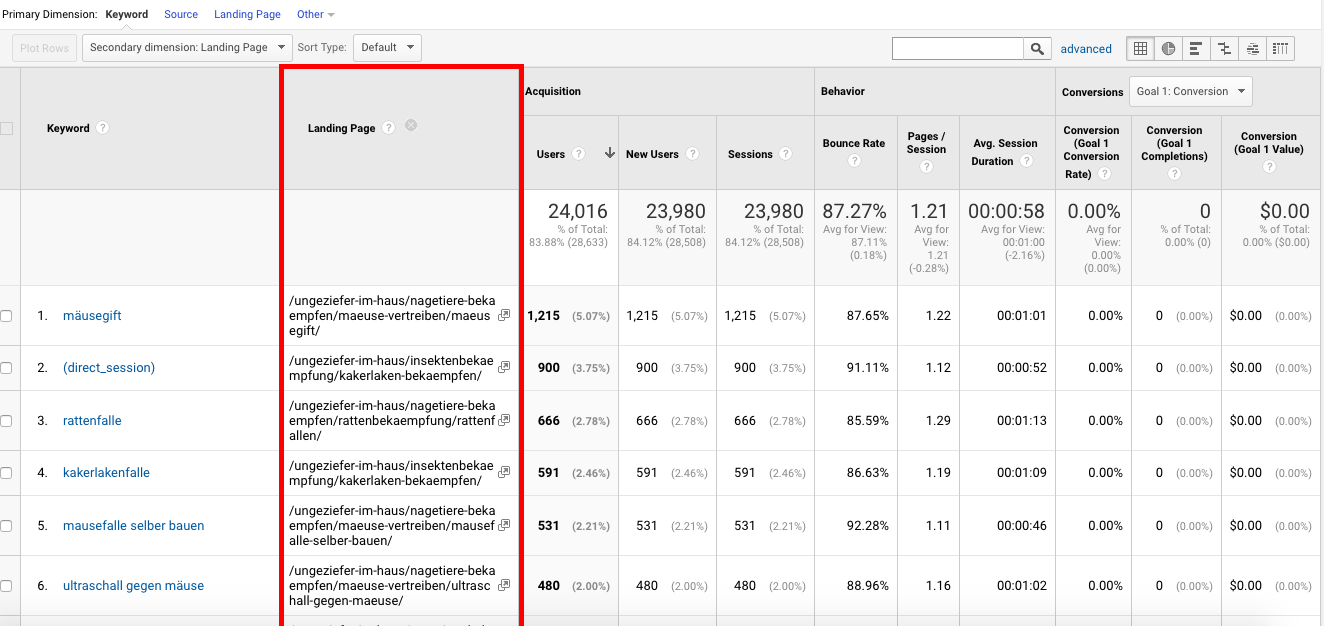Deep Dive into the 'Secondary Dimension' in Google Analytics: Everything You Ought To Understand
Deep Dive into the 'Secondary Dimension' in Google Analytics: Everything You Ought To Understand
Blog Article
Browsing the Midst of Secondary Dimension in Google Analytics: A Detailed Exploration on Its Performance
In the realm of electronic analytics, the complexities of information analysis typically hold the key to opening useful understandings. Within the large toolkit of Google Analytics exists an attribute that functions as a concealed treasure for those that look for a much deeper understanding of user actions and site efficiency. Secondary measurements, though seemingly uncomplicated initially glimpse, harbor a riches of untapped possible waiting to be harnessed. As we start this trip to check out the nuanced capability of secondary measurements, we will certainly reveal just how this feature can illuminate patterns, unveil relationships, and inevitably lead the way for informed decision-making in the electronic landscape.
Understanding Secondary Measurements in Google Analytics

Comprehending exactly how second measurements job is crucial for leveraging the complete power of Google Analytics. These dimensions help you address extra complicated questions regarding user habits and the efficiency of your web site material and marketing initiatives. You can use additional dimensions to examine which browsers or devices are most typically used by visitors that make a purchase, or to contrast the bounce rates of different web traffic resources. By incorporating main metrics with additional measurements, you can get valuable understandings that drive notified decision-making and optimization methods - what is a “secondary dimension” in google analytics?.
Leveraging Additional Measurements for Data Evaluation
Structure upon the fundamental understanding of exactly how additional dimensions enhance information evaluation in Google Analytics, the application of these extra layers of details comes to be paramount in removing useful understandings for notified decision-making and optimization methods. By leveraging additional measurements, analysts can dig deeper right into the efficiency metrics by including even more context to the main dimensions, thus revealing concealed patterns and relationships that may not appear at very first glance. This deeper degree of evaluation makes it possible for companies to much better recognize customer habits, identify trends, and pinpoint locations for improvement.
In addition, secondary measurements provide an even more extensive sight of the information, permitting segmentation based upon various criteria such as demographics, tools, web traffic sources, and a lot more. This segmentation assists in a more granular evaluation, enabling services to customize their approaches and projects to specific target market segments for enhanced targeting and customization. Essentially, the calculated use of additional measurements equips organizations to make data-driven choices that drive growth and success in the electronic landscape.
Advanced Strategies for Additional Dimension Execution
Discovering complex approaches to harness the full possibility of additional dimensions in Google Analytics boosts the deepness and class of information evaluation for strategic decision-making. One innovative strategy for implementing second dimensions is using custom dimensions. By defining custom measurements, users can section information even more to obtain even more particular understandings right into customer behavior, such as tracking interactions with particular aspects on a page or keeping track of the efficiency of a specific advertising and marketing campaign. One more advanced technique is the utilization of regex (regular expressions) within second measurements. Regex enables even more versatile and effective pattern matching, enabling users to create complex filters for data analysis. Additionally, incorporating additional dimensions with innovative sectors can give much more granular understandings by applying multiple layers of segmentation to the information. This approach enables a deeper understanding of customer behavior based upon different standards all at once. Carrying out these sophisticated strategies for additional dimensions in Google Analytics encourages individuals to carry out more sophisticated analysis and make data-driven decisions with accuracy.
Interpreting Insights With Second Measurements

When analyzing insights through secondary measurements, it is important to take into consideration the context of the data and exactly how different measurements engage with each other. Understanding which specific website traffic resources lead to higher conversion rates or recognizing which tools customers favor for making purchases can give workable insights for enhancing marketing campaigns and enhancing total internet site efficiency. By meticulously examining the data with additional measurements in mind, organizations can make enlightened decisions that drive meaningful results and boost their digital existence.
Optimizing Performance With Additional Measurements

One crucial way to maximize efficiency with secondary measurements is by segmenting information much more granularly. This permits you to separate specific elements that might be influencing your metrics and obtain a better understanding of what drives success or failure in your digital campaigns. By combining additional dimensions such as 'gadget classification' and 'landing web page,' you can pinpoint which tool kinds are most efficient for particular touchdown pages, allowing you to customize your strategies appropriately.
Furthermore, using second dimensions can help you recognize fads, patterns, and relationships that may not appear when evaluating data with key dimensions alone. This much deeper degree of evaluation can cause more informed decision-making and ultimately improve the overall efficiency of your website or electronic marketing campaigns.
Final Thought
To conclude, secondary dimensions in Google Analytics play a crucial function in boosting information analysis and providing deeper understandings her response right into web site efficiency. By utilizing advanced strategies and analyzing the data successfully, companies can optimize their techniques and enhance overall performance. Recognizing the functionality of secondary measurements is crucial for making informed decisions and driving success in the electronic landscape.
By leveraging secondary measurements, experts can dig much deeper right into the performance metrics by adding even more context to the main dimensions, hence uncovering covert patterns and relationships that might not be obvious at very first look. One advanced strategy for implementing secondary dimensions is the usage of custom dimensions.Having understood advanced techniques like customized dimensions and regex for additional measurement implementation in Google Analytics, the following essential step is analyzing the useful More Bonuses understandings acquired through these innovative data segmentation techniques. Analyzing understandings through second dimensions entails examining the partnerships in between the primary and second dimensions selected, discovering patterns, trends, and correlations that might not be promptly obvious when looking at the information in its entirety.When translating insights with additional dimensions, it is vital to consider the context of the information and just how various dimensions connect with each various other.
Report this page